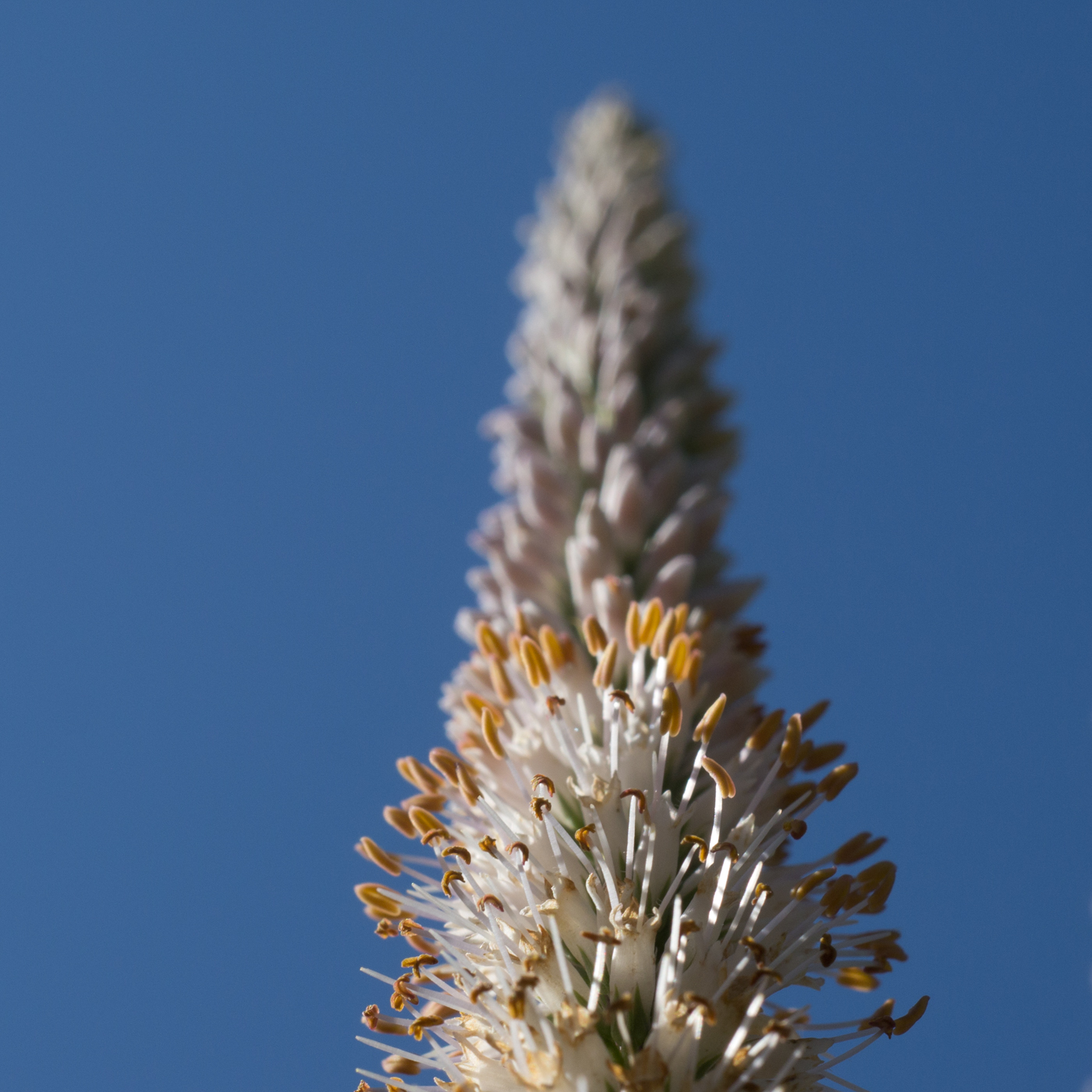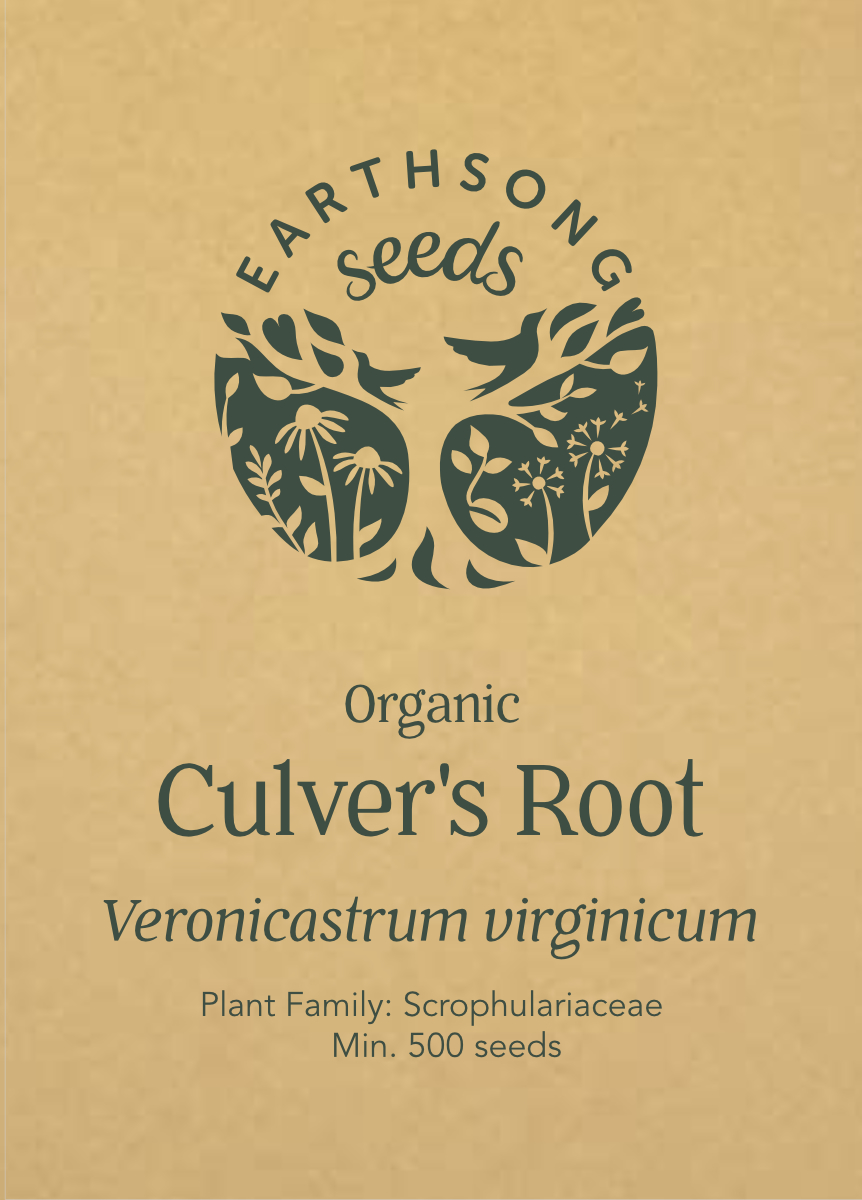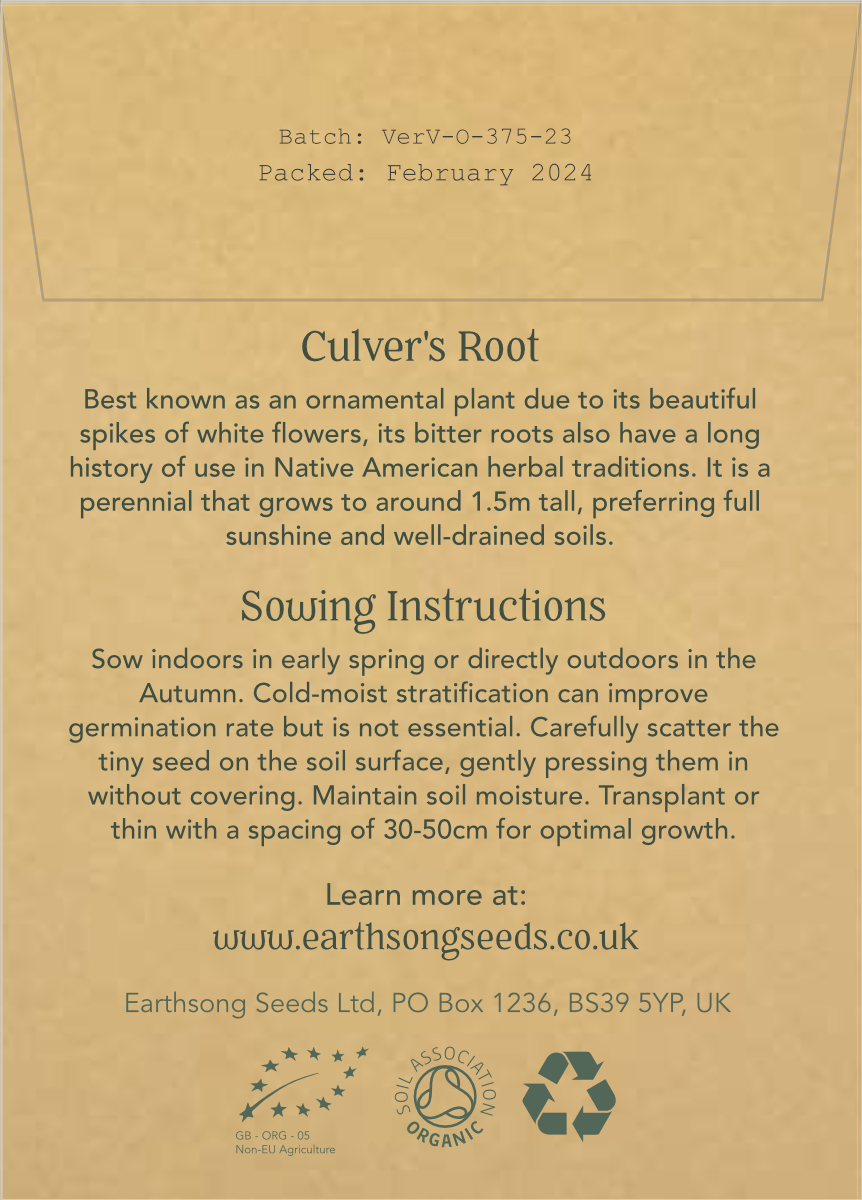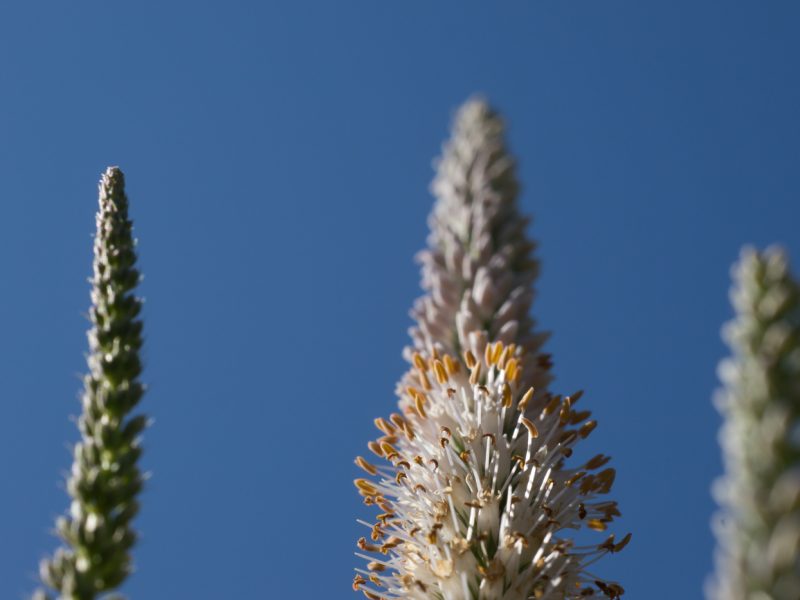Description
Culver’s root is best known as an ornamental plant, much loved for its stunning spikes of white flowers. Less known and less seen are its bitter roots which have a long history of use in Native American herbal traditions.
Native to Eastern and Central regions of the United States, culver’s root was reportedly used by indigenous people to treat a range of ailments, including as a diaphoretic (to induce sweating), emetic (to induce vomiting), laxative, and as a remedy for fevers, dysentery, constipation, and liver complaints. It was later adopted by European settlers and eventually found its way into Western herbal practice, primarily as a bitter herb to support digestion and cleanse the liver.
It is a favourite of ours at Earthsong Seeds; its distinctive flower spikes provide a unique and contrasting aesthetic to the more typically rounded plants of the herb garden. It is a perennial that grows to around 1.5m in height when it is in full bloom in mid to late summer. Generally speaking it prefers full sunshine and well-drained soil, but we grow it in a variety of locations and soil types and have found it to be very adaptable.

















